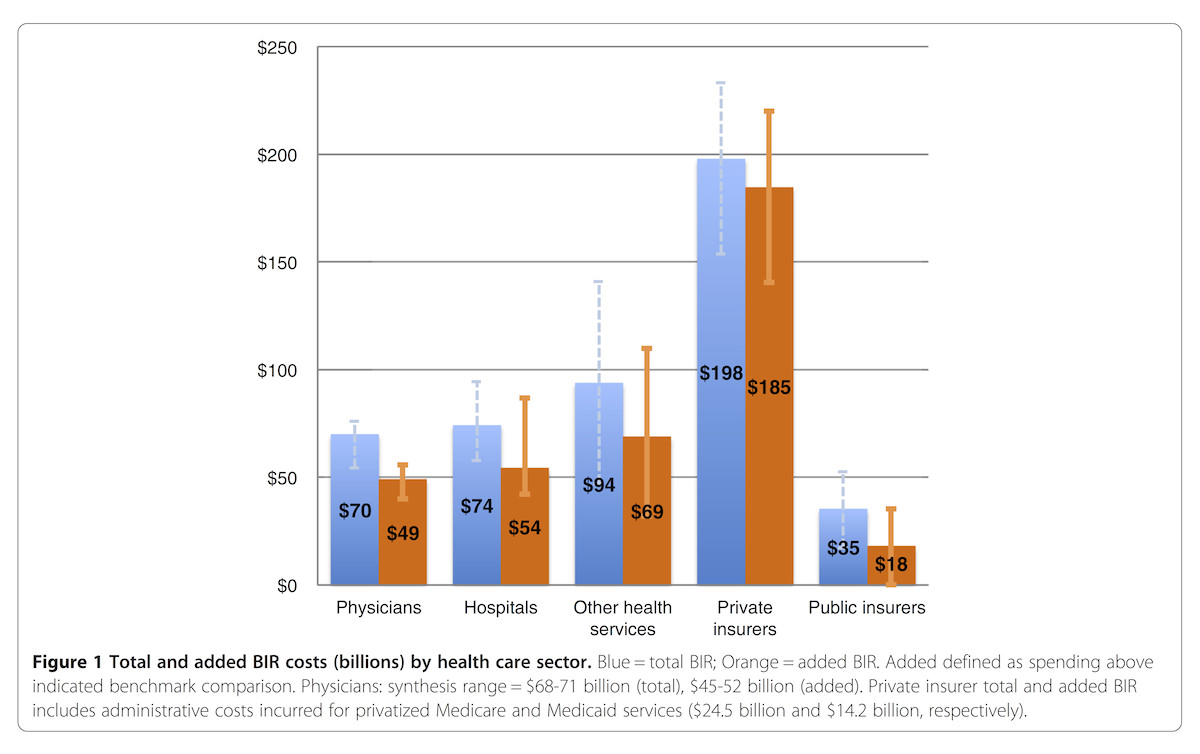According to a study published by BMC Health Services Research, billing and insurance-related (BIR) administrative “costs in the U.S. health care system totaled approximately $471($330 – $597) billion in 2012”. This translates to every man, woman, and child in America spending $1,570 on BIR activities – pushing around paperwork and paying for an unproductive bureaucracy. More specifically, this “includes $70 ($54 – $76) billion in physician practices, $74 ($58 – $94) billion in hospitals, an estimated $94 ($47 – $141) billion in settings providing other health services and supplies”.
The conclusion of the study was “A simplified financing system in the U.S. could result in cost savings exceeding $350 billion annually, nearly 15% of health care spending”. Specifically, as illustrated by Figure 1, it is estimated that a simplified financing system would allow physicians to save $49 billion, hospitals an additional $54 billion, and other health service providers $69 billion.

The study in Figure 2 indicates the “contribution towards total added BIR”. “Added is defined as spending above indicated benchmark comparison” with the benchmark being a simplified financing system or a single-payer system. Without a simplified financing system, physicians, hospitals, and other health service providers “contribute” 13%, 15%, and 18% of the $375 billion over-spending respectively, on BIR administrative costs.

Although non-BIR administrative costs “e.g., medical records, scheduling” aren’t the focus of the study, it is worth noting as illustrated in Figure 3, 9.4% of approximately $2.6 trillion of 2012 U.S. Health Consumption Expenditures was spent on non-BIR administrative activities.

Finally, the study goes on to state, “it appears that HIT will impose hefty implementation and training costs, and may require ongoing expenditures for IT upgrades and maintenance”.

